A Scion Society of The Baker Street Irregulars

Data! Data! Data! – The Blue Carbuncle
- “‘Data! Data! Data!‘ he cried impatiently. ‘I can’t make bricks without clay.’”
– The Adventures of The Copper Beeches (COPP)
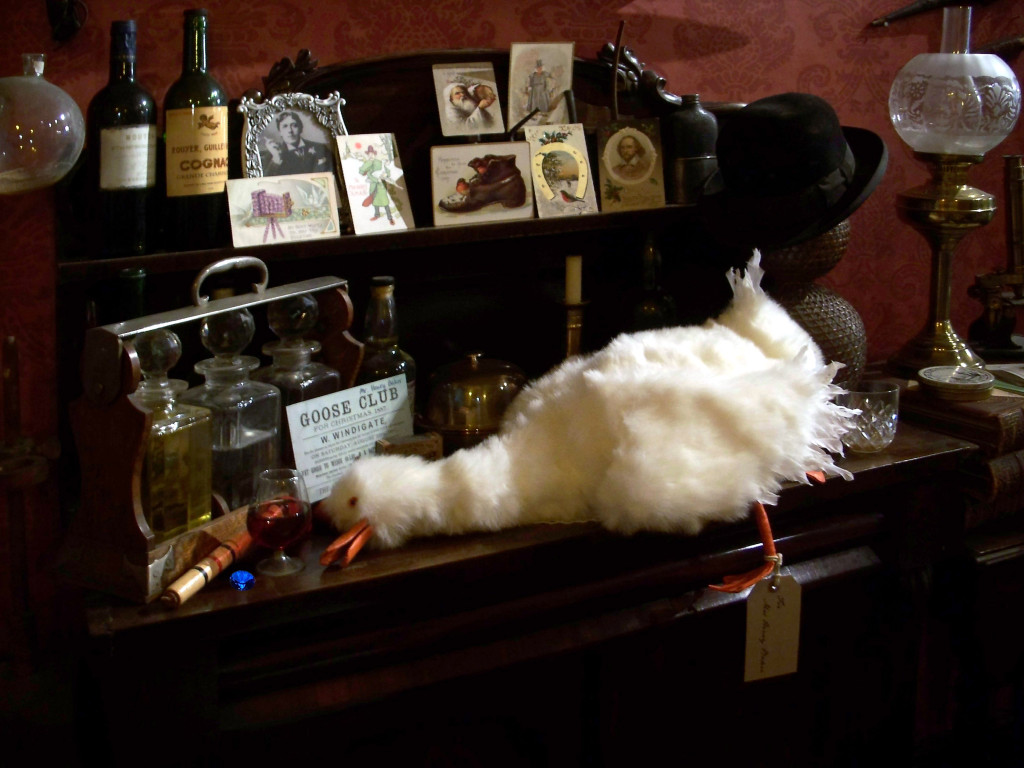
This column is composed of material (Data!) developed for a short course called Appreciating Sherlock Holmes that I teach twice a year in the Community Education Life Enrichment Program for a local community college. It is composed of “points of information” that are common to many / most / all of the 60 Canonical stories.
The information here has been researched by me or borrowed / stolen from many efforts of other Sherlockians.
Boy, are we predictable. Covering Sherlock Holmes’ “Christmas” story in December. How original. Regardless, it is still a great story.
HERE GOES This month’s story The Adventure of the Blue Carbuncle
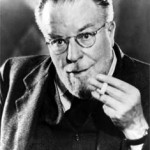 CHRISTOPHER MORLEY SAID . . .
CHRISTOPHER MORLEY SAID . . .
Christmas, “the season of forgiveness,” leads Holmes to let a badly frightened thief escape without punishment. Some of his shrewdest deductions lead up to a crisis, particularly the inference from the man’s hat that his wife no longer loves him.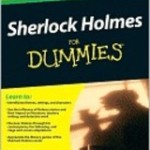
DUMMIES SHORT SUMMARY (From Sherlock Holmes for Dummies by Steven Doyle & David Crowder)
“The only Christmas tale in the canon is a tour de force of detection as Holmes traces the journey of a stolen jewel from a hotel room to the crop of a Christmas goose.”
PUBLISHING HISTORY
- This is the 9th of the 60 stories to be published.
- It was first published in The Strand Magazine in January, 1892.
- It is part of The Adventures of Sherlock Holmes collection in book form in 1894.
- The British illustrator was the renowned Sidney Paget.
HOW MANY WORDS?
According to C. E. Lauderback, 1960 – – found on SHERLOCKIAN.NET website of Chris Redmond, at 7,879 words BLUE has the 27th most words (#1 is VEIL – 4,499, #56 if NAVL – 12,701)
THE BEST OF SHERLOCK HOLMES (How do Sherlockians rate this story?)
Always a popular story, so these ratings are no surprise.
1927 – Arthur Conan Doyle did not include it on his list of 12 favorites.
1954 – The Baker Street Irregulars voted it 6th best of the short stories.
1959 – The Baker Street Irregulars voted it 3rd best of the short stories.
1999 – The Sherlock Holmes Society of London voted it the 4th best of the short stories.
CLASSIFYING THE CASE (From the Wandering Gipsies of Grimpen Mire of Decatur, Alabama)
This case is one of 4 cases classified as a theft of gems. The others were The Adventure of the Beryl Coronet, The Adventure of the Mazarin Stone, and The Adventure of the Six Napoleons.
CHRONOLOGICALLY SPEAKING
Doyle was often very vague about stating WHEN the tale took place and included few contemporary references to help. Whether this was done intentionally or unthinkingly, the dating of events in the Canon is a very popular pastime pursued by several of our “scholars” researching and justifying their results to no end.
We will again default to William Baring-Gould’s dating of December 27, 1887, making it the 15th story in time. This means that Holmes was 33 and Watson 35.
WHAT ELSE HAPPENED IN 1887?
1887 was a busy year in the world. It is always interesting to see what else in happening at the same time as the stories.
EMPIRE
- British East Africa Company charter awarded.
- Zululand becomes a protectorate.
BRITAIN
- Victoria’s Golden Jubilee.
- Irish Coercion Act; Irish Land Act.
- Charing Cross Road opens.
- Coal Mines Regulation Act, boys under 13 not to work underground, and under 12 at the surface.
WORLD
- United States begins free mail delivery to homes of any community with a population of 10,000 or more.
- China recognizes Portugal right to the island of Macao.
- German Reichstag dissolved; alliance of Imperialists, Conservatives, some National Liberals–the Kartel–gave Bismarck majority in the new Reichstag; military grants renewed.
- Renewal of Russo-German ‘Reinsurance’ Treaty; and Triple Alliance.
- Italian force annihilated by Ethiopians at Dogali.
- Union of Indo-China formed by France.
- Yellow River floods in China, killing nearly a million people.
- Interstate Commerce Act, federal control of interstate railways.
ART
- A. Conan Doyle’s A Study in Scarlet, the first Sherlock Holmes story, published.
- Rider Haggard publishes She and Allan Quatermain.
- Cazanne paints The Blue Vase.
- Claude A. Debussy debuts Le Printemps.
- Monet paints Fields in Spring.
- Richard Strauss debuts Aus Italien and Macbeth, tone poems.
SCIENCE
- Radio waves discovered by Hertz.
- Bauxite, source of aluminum, is discovered in Georgia.
- Edison and Swan combine to produce ‘Ediswan’ electric lamps for domestic use.
- Mach defines the Mach Number, now used in supersonic flight.
- Daimler four-wheeled motor car produced.
- Goodwin invents celluloid film.
HOLMES AND WATSON – PERSONAL INFO
Holmes, as usual, is living at 221B. Watson is living separately; but there is no mention of a wife.
DRAMATIS PERSONAE
We have a big and interesting cast of characters in this month’s classic tale:
- PETERSON, a commissionaire who brings Holmes a bird, a billycock, and an adventure
- HENRY BAKER, frequenter of the Alpha Inn, who lost his hat and goose
- COUNTESS OF MORCAR, from whom the blue carbuncle was stolen while she was staying at the Hotel Cosmopolitan
- JOHN HORNER, a plumber, with a past conviction for stealing, but now an honest tradesman accused of stealing the carbuncle.
- JAMES RYDER, a senior attendant at the Cosmopolitan Hotel
- CATHERINE CUSACK, maid of the countess and friend of Ryder
- INSPECTOR BRADSTREET of Scotland yard who arrested Horner
- WINDIGATE, proprietor of the Alpha Inn
- BRECKENRIDGE, a poultry dealer with a shop in Covent Garden who sold the goose to Windigate
- OAKSHOT, sister of Ryder who fattened geese and sold them to Breckenridge
- JOHN ROBINSON, an alias used by Ryder in a futile attempt to deceive Holmes
- UNKNOWN DEAD GOOSE, no one else put in in the credits but me
“QUOTABLE SHERLOCK”
- “On the contrary, Watson, you can see everything. You fail, however, to reason from what you see. You are too timid in drawing your inferences.”
- “It is a question of cubic capacity. A man with so large a brain must have something in it.”
- “It’s a bonny thing,” said he. “Just see how it glints and sparkles. Of course it is a nucleus and focus of crime. Every good stone is. They are the devil’s pet baits.”
- “When you see a man with whiskers of that cut and the Pink Un protruding out of his pocket, you can always draw him by a bet.”
- “My name is Sherlock Holmes. It is my business to know what other people don’t know.”
- “It is always awkward doing business with an alias.”
- “I suppose that I am commuting a felony, but it is just possible that I am saving a soul. This fellow will not go wrong again; he is too terribly frightened. Send him to jail now, and you make him a jail-bird for life.”
- “Chance has put in our way a most singular and whimsical problem, and its solution is its own reward.”
HOLMES’ FEE
None. It is likely Holmes received a big reward for returning the Blue Carbuncle to the Countess, although that is not stated in the story. Holmes may have shared the reward with Peterson the commissionaire. (In our view, he should have.)
SHERLOCK ON THE BIG SCREEN & THE LITTLE SCREEN

In spite of the story’s popularity, it has only been done 4 times:
- 1923 – Eille Norwood did The Blue Carbuncle as the as the 35th of his 47 movies. A copy exists.
- 1968 – Peter Cushing did The Blue Carbuncle in his Sherlock Holmes TV series
- 1985 – Jeremy Brett starred in The Blue Carbuncle for BBC/Granada as the 7th of 41 episodes
- 1999 – The Adventure of the Blue Carbuncle was part of the Sherlock Holmes in the 22nd Century (Animated TV series) (Editor’s Comment: You can watch this episode by clicking HERE. It’s, ahem, different….)
FAINTING IN THE CANON (courtesy of Sherlockian Karen Murdock)
Fainting is extremely common in the Canon, appearing, in some form, in 37 of the 60 tales. In 21 cases, someone actually faints. In 22 cases, someone almost faints. And in 5 cases, someone pretends to faint. In this month’s story, James Ryder almost faints, but John Horner actually does faint. (“Horner, who had shown signs of intense emotion during the proceedings, fainted away at the conclusion and was carried out of the court.”)
NEWSPAPERS (Real and Fictional)
Though newspapers are mentioned in only 20 tales, some of our more obsessed Sherlockians love this one. This month’s tale mentions more newspapers than any other story.
- Echo – London evening paper that was liberal in politics and near bankruptcy throughout its short career
- Evening News – A conservative London paper that was founded in 1881
- Evening Standard – The evening version of the popular Standard.
- Globe – The oldest evening London paper. Became Conservative after a long-time supporter of Whigs.
- Pall Mall Gazette – London evening paper which was initially independent but frequent owner changes changed format and politics
- James Gazette – Founded in 1880 and was a Tory paper on high intellectual level but could not succeed on own and was absorbed into the Evening Standard in 1905
- Sporting Times – Contained mainly betting information. Know as the “Pink Un”
- Star – A Liberal paper. Was acquired by the Daily News in 1909
ANNOTATED SHERLOCK
The 60 Sherlock Holmes stories used English as spoken in England from the 1880’s until the 1910’s. Some words are foreign to us today and need a “contemporary translation.” For example:
- “billycock” – Usually, a round low-crowned soft felt hat, but sometimes a still felt hat, or bowler
- “the Assizes”- periodic sessions of judges of the superior courts in every county in England for the purpose of administering justice in the trial and determination of civil and criminal cases
- “a scotch bonnet” – A tam-o’-shanter; a soft woolen bonnet or cap with a flat circular crown, the circumference of which is about twice that of the head
- the “Pink Un” – A sporting journal, printed on pink paper, not unlike the Police Gazette
- “commissionaire” an association of pensioned, former soldiers, formed in London in 1859 by a retired cavalry officer, determined to better the lot of veterans, who were often down on their luck. They were uniformed and acted as porters, messengers, attendants, and the like.
- “carbuncle”- is a garnet, typically cut en cabochon, (with a domed top) Garnets come in many colors: white, yellow, green, red, orange, brown, purple, and black; no blue garnet has ever been reported.
- “penal servitude” – has three stages: (1) solitary confinement in a “close” prison, limited to nine months but with the prisoner engaged in some industrial employment; (2) a period of labor at a “public works” prison; and (3) conditional release for the unexpired portion of the sentence upon license or ticket-of-leave if the prisoner earned “marks” of credit for remission of up to one-quarter of his or her sentence.
- “disjecta membra” – scattered members; disjointed portions or parts
WEAPONS (from A Compendium of Canonical Weaponry by Dettman and Bedford)
… “a means by which one contends against another” … utilized in 57 of the 60 tales (all but CREE, 3STU & YELL) There are several general categories to classify “weapons” that include: firearms, human agents, cutlery, animals, blunt instruments, extortion, toxin, blackmail, and miscellaneous. In our story, our list is short and you will find but two weapons mentioned:
- Stick – a blunt instrument which Henry Baker used to defend himself against a gang of ruffians.
- Dog – An animal with which Mr. Breckenridge threatened to set on James Ryder.
ODD STUFF
Yes, Sherlockians write poetry – mostly limericks – but still poetry. One Sherlockian, going the pseudonym of Olivia Stationery gives us this one:
It began with the loss of a bird
With a gem in its gullet interred.
John Horner was blamed
Until Ryder, ashamed,
To Holmes’s stern mercy deferred.
 Frank Mentzel, aka Merridew of Abominable Memory, is the current Gasogene of the Six Napoleons of Baltimore. His Appreciating Sherlock Holmes classes for the Community Colleges of Baltimore County, MD have wrapped up its recent fall semester. A good deal of Frank’s time this month will be spend baking Christmas cookies.
Frank Mentzel, aka Merridew of Abominable Memory, is the current Gasogene of the Six Napoleons of Baltimore. His Appreciating Sherlock Holmes classes for the Community Colleges of Baltimore County, MD have wrapped up its recent fall semester. A good deal of Frank’s time this month will be spend baking Christmas cookies.

Sorry, comments are closed for this post.